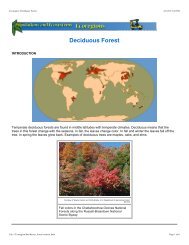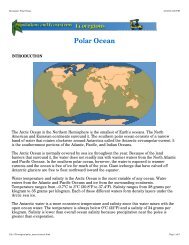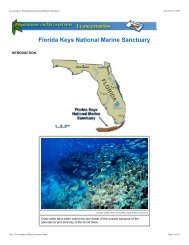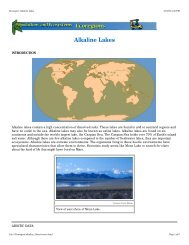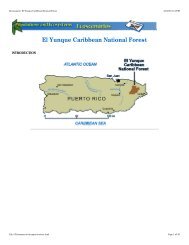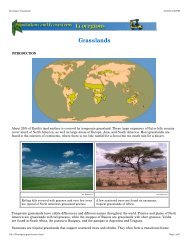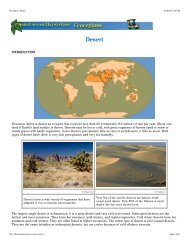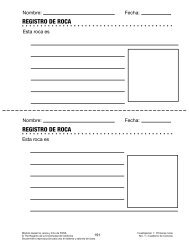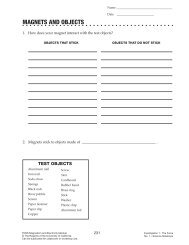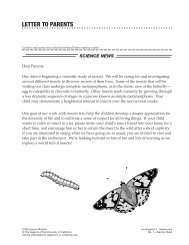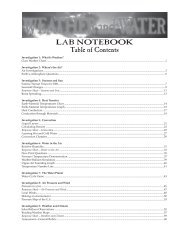Ecoscenarios Combined - FOSSweb
Ecoscenarios Combined - FOSSweb
Ecoscenarios Combined - FOSSweb
You also want an ePaper? Increase the reach of your titles
YUMPU automatically turns print PDFs into web optimized ePapers that Google loves.
Ecoscenario: Florida Keys National Marine Sanctuary<br />
4/16/03 3:17 PM<br />
Courtesy of MODIS Rapid Response Project, NASA/GSFC<br />
Satellite photo of southern Florida, Bahamas, and Cuba. Light<br />
blue areas show the shallow shelves where coral reefs can<br />
survive.<br />
Barrier reefs like those in the Florida Keys are obstacles to ocean waves. Behind the reef is an area of calm, warm,<br />
shallow water called a lagoon. Lagoons are important habitats for juvenile fish and organisms that cannot tolerate<br />
the open ocean or turbulent reef.<br />
Between June 1 and November 30 each year there is a 13–16% probability of a hurricane in the Florida Keys.<br />
Hurricanes form in zones of low air pressure off the west coast of Africa. Air currents direct them toward the<br />
Caribbean and the east coast of North America. Hurricane winds and high waves damage reefs by breaking<br />
branching coral and displacing many organisms. The most serious damage, however, is the result of fine sediment<br />
stirred up into the water. It reduces the sunlight in the water. Fine sediment that settles on coral polyps can also<br />
smother them. Recent hurricanes that passed through the Florida Keys include Hurricane Andrew in 1992,<br />
Hurricane Georges in 1998, and Hurricane Irene in 1999.<br />
file:///Ecoscenario/flakeys/content.html<br />
Page 5 of 18



